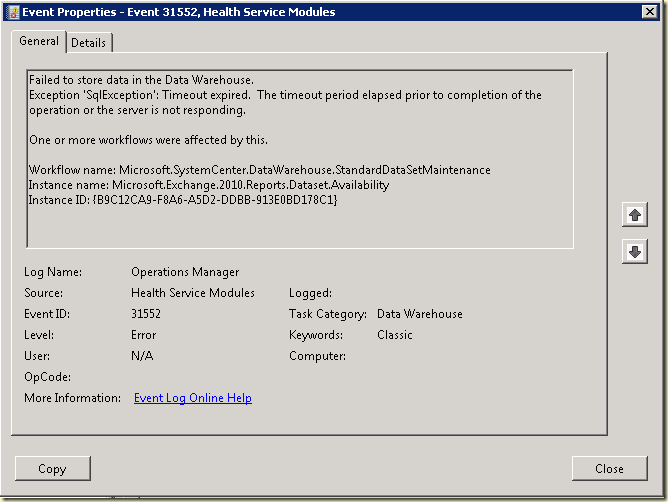Some years ago there was a TV commercial about Heinz ketchup. A man and a woman, eating French fries with Heinz Ketchup, were asked whether they ever tried ketchup from another producer. The man kept on eating and the woman asked: ‘What
other ketchup?’ and continued her meal. Man and woman cracked a smile and said nothing more.

The message was clear and simple: For them there was only one ketchup, the one from Heinz. Nothing else.
Heinz, SCOM & VMware
Looking at SCOM in conjunction with monitoring VMware there is – if you ask me – the same situation going on. Yes, there are multiple vendors offering monitoring solutions for VMware and hooking it up to SCOM.
But the Heinz experience for me personally is the one coming from Veeam. Why?

Monitoring VMware with SCOM
As we all know a VMware based environment is far from simple. It consists out of one or more storage solutions, network layers, physical servers (working in concert) which are the hosts for all the VMs, the control layer (vCenter) and the lot.
Covering all these aspects in SCOM isn’t easy. And VMware hosts are picky when it comes down to installing (additional) software. So you want to hook up SCOM to it, but in such a way that it doesn’t create any additional burden nor requires the installation of additional software on any host or guest.
Also, you don’t want to introduce an additional framework which needs serious maintenance, planning and studying of your staff in order to understand and manage it. After all, you installed SCOM to reduce the workload and not to make it more heavier.
On top of it all, the complexity of monitoring a VMware environment must kept away from you and your staff. You only want to put a thermometer into VMware and have SCOM report on it. Period. Whether it’s about the storage, the VMs or the hosts, the CPUs, physical or virtual, you want to KNOW what is happening. And again, all the complexity must be out of sight and yet you want to know it ALL of your virtualized environment.
And it must be scalable. Whether you run two VMware Hosts or 250, it must be covered by the monitoring solution. The installation must be straight forward and well documented. So the complex stuff is kept away from you while SCOM will show an in-depth view of the status of your VMware environment.
For me, and many of my key customers running VMware environments and SCOM, have found the solution with Veeam. It rocks! All above mentioned issues are addressed. So I am a believer when it comes down about how to monitor VMware with SCOM. No questions there.
Seeing is believing
But how to convince the customers? Of course, I can be very enthusiastic about good products. Can tell them a lot about it. But seeing is believing. So I can show them a real life environment with VMware and SCOM. But that means traveling, planning and the lot.
Wouldn’t it be nice to show Veeam and SCOM from my laptop? My laptop is Windows 2008 R2 SP1 based, so running a VM isn’t an issue at all. But running one or more VMware Hosts from it isn’t possible. So how to go about it?
Veeam has released a zip file (one has to contact Veeam in order to obtain it) known as Veeam nworks Demo. What it contains, or more important, what it does? Taken directly from the included guide:
‘…to allow the demonstration of the nworks Management Pack for VMware when there is no access to a running live VMware system to provide the monitoring data. nworksDEMO will ‘spoof’ as a genuine nworks Collector server, and will run standalone . With no connection to any VMware systems it will generate monitoring data to feed the nworks Management Pack for VMware. Performance graphs, topology diagrams, and example alerts from VMware systems will be created in Ops Mgr so that the nworks Management Pack can be showcased in a very simple and repeatable way…’
Let test drive it…
Like the real tool, it is simply installed. Also two MPs need to be imported and then some waiting and patience is at order. But soon the SCOM R2 Console will populate the VMware Views:

And:

And:

And those are not just wallpapers. These are fully clickable, like any other real item in SCOM. Nice!
Also Reports are present and fully operational:

This is really great. Now I can demonstrate VMware monitoring from my laptop! And of course, a real life demo is still possible but the first impression is the most important one. No more additional travel and planning needed for that one. Nice!




















